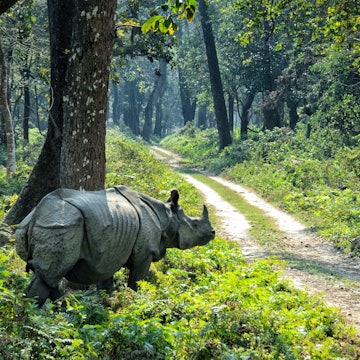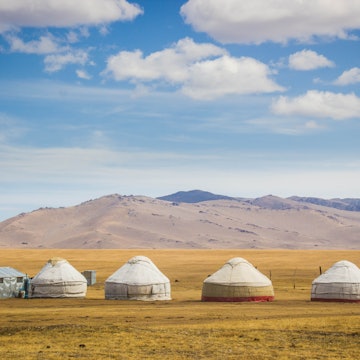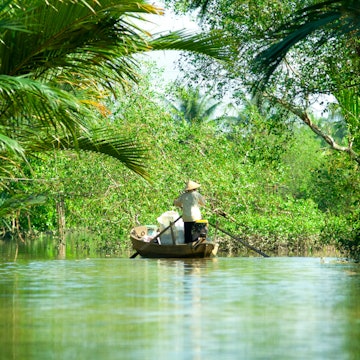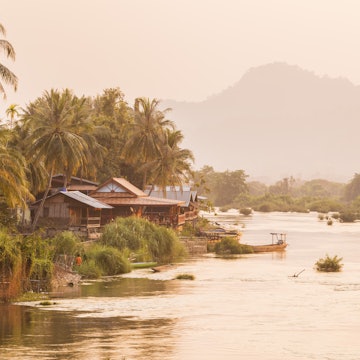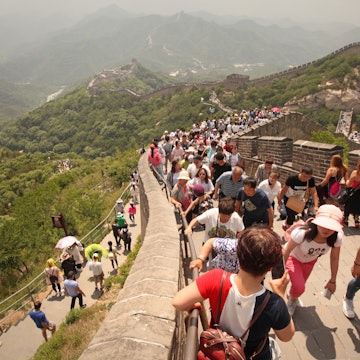

Chengdu's Anshun Bridge was mentioned by Marco Polo in his 13th century writings about China. Nick Wonnell / Shutterstock
Sichuan (四川) – the ‘China of China’. This far west province is a microcosm of all that draws visitors to the Middle Kingdom. Fiery food, sleepy pandas, a diverse set of ancient cultures and wild natural landscapes are just a handful of Sichuan's perennial attractions.
In 2018 there are more reasons than ever to travel to the land of four (四) rivers (川). Sichuan's capital has grown into a cool, modern city full of interesting design and art, new railway lines are opening to the farthest reaches of the province's interior – including a new 'roof of the world' line that will shuttle travellers to Tibet – and one of China's most prized national parks has recovered from a devastating earthquake.

So prep your tastebuds for a peppercorn tingling, because the time is now to see the most Chinese of China's provinces.
Chengdu – an ancient and modern city
Capital city Chengdu is the centre of one of China's four best-known regional cuisines, featuring bold spices and face-numbing peppercorns. This perhaps also explains the city's famous fire-breathing and face-changing opera performances – in some way an expression of the heat-laden dining experiences found across the province.
But beyond Chengdu's ancient temples and centuries-old teahouses is a hip contemporary culture only just gaining recognition among travellers: chic design hotels, hot clubs and creative brewpubs, and a bevy of art museums that stretch from imaginatively-presented relics of Sichuan's past to contemporary spaces featuring local and national artists.
Visiting pandas in Sichuan's forests
Chengdu's Giant Panda Breeding Research Base – an ex-situ conservation effort that aims to eventually rewild the bamboo scarfers – is undoubtedly the best place in the world to get up close and personal with the panda, but it's not Sichuan's only option. Outside the city of Ya'an, 150km west of Chengdu, the Bifengxia Panda Base maintains a more natural atmosphere – here you hike up a forested gorge, past waterfalls and cultural relics, to see a small group of pandas in the midst of a pleasant wooded setting typical of central and southern Sichuan.
Into the mountains of Sichuan
Push deeper into western or northern Sichuan, and the lowland plains of the Chengdu Basin give way to the rugged foothills of the Tibetan Plateau. National parks highlight the most scenic areas here, with standout Jiuzhaigou National Park's cerulean lakes and wide waterfalls once again open to tourists in limited numbers after a 2017 earthquake tore through the north of Sichuan and closed the park for months.
Further west, three serene valleys in Four Sisters Mountain National Park give visitors the chance to hike on unpaved trails under the shadow of four towering peaks fronted by glaciers and remote lakes.

And in the far southwest of the province, Yading Nature Reserve has been rebranded as a sort of latter-day Shangri-la, combining Tibetan temples and culture with one- to four-day hiking routes through pristine nature virtually untouched by modern development.
Exploring Tibetan Culture in Kham
A new Tibet-Sichuan railway line will connect Chengdu with Lhasa in just 15 hours when it opens in 2025. Travellers who don't want to deal with the permit and travel agency constraints (and expense) of visiting the Tibet Autonomous Region should look a little closer at Western Sichuan, which roughly corresponds to Kham, one of historical/cultural Tibet's three traditional provinces.
This area is home to a two-hundred-year-old monastery and printing press in the town of Dege. Some 40,000 monks live at Seda's Larung Gar Buddhist Academy and another 10,000 monks and nuns call Yarchen Gar Buddhist Academy home. Quaint mountain monastery towns like Langmusi and Garze are equally perfect for learning about Tibetan culture and religion, or just exploring the surrounding hillsides. For wandering freely through Tibetan cultural areas, Sichuan is one of the best choices in all of China.
Holy Sites of the Chengdu Basin
Several religious sites close to Chengdu offer the chance to escape the city bustle and get a glimpse of China's diverse history. Le Shan is home to the famed 71m tall Grand Buddha, carved straight into a cliff face in an effort to appease the swirling waters of three mighty rivers that converge here. The area attracts pilgrims from across the country to marvel at this powerful Buddha from land and by boat.

Others head up Emei Shan, through serene forest paths (or quick cable car rides) that wind past 9th-century temples to 3099m Jinding Peak. Get up early enough and you can watch the sunrise phenomenon known as 'Buddha's Halo' – rising light reflecting off clouds to create the mystical appearance of humans gliding through the skies.
The Taoist highlight of Sichuan is Qingcheng Shan. This mountainside complex of ancient temples and misty forests is renowned as the birthplace of this traditional Chinese religion, to which pilgrims have sojourned for more than 2000 years to spend their days living in monasteries and meditating on the beauty of the region.
Ancient River Towns
Sichuan's historic riverside towns are the perfect places to slow down and relax for a bit. Found mostly along the 'Tea Horse Road', a historic trading route between Tibet and Sichuan (sometimes referred to as the Southern Silk Road), these laid-back destinations offer a nice combination of small-town leisure, historic architecture and bucolic countryside.
Riverfront teahouses and a network of pleasant walking paths recommend Liujiang. Boutique guesthouses and restored Qing architecture, plus historical connections to the Romance of the Three Kingdoms (one of China's most important literary sagas) make Langzhong a great escape. And ease-of-access on a quick direct bus from Chengdu make Pingle the simplest village to reach. No matter which you choose, they're all great options in which to unwind after exploring one of China's most diverse set of experiences across Sichuan.







